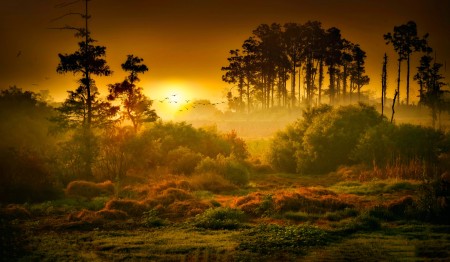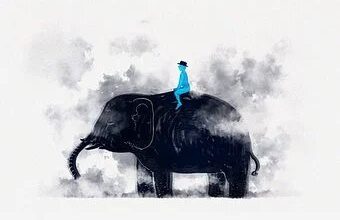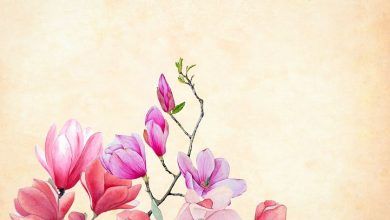
I Grew Up by Lenore Keeshig-Tobias is a nostalgic poem that encapsulates the experiences of growing up in a reserve by a Native Canadian-American poet. Dealing with the themes of nature, childhood, the idea of home and the notions of the Self and the Other, I Grew Up explores the sense of freedom and the unlimited imagination that comes with being a child. Lenore Keeshig-Tobias paints a scenic and sublime image of the place she holds very close to her heart and how it is different from the definitions that the outside world tries to foist on it. The poem was published in 1983
I Grew Up | Summary
I Grew Up | Summary, Line 1-15
i grew up on the reserve
thinking it was the most
beautiful place in the world“i grew up thinking
“i’m never going
to leave this place”i was a child
a child who would
lie under treeswatching the wind’s rhythms
sway leafy boughs
back and forthand rocking me as
i snuggled in the grass
like a bug basking in the sun
I Grew Up is an intimate poem based on the childhood experiences of an Anishinabe girl growing in a reserve. In this poem, the poet talks about her favourite memories and says that she grew up thinking “I’m never leaving this place”. As a child, she believed “it was the most beautiful place in the world”, which describes her love for the reserve. She says that as a child she used to lie under trees, watch the wind blow, the branches sway and the clouds pass by. The close relationship she had with the environment of the reserve is seen in the way the wind, whose rhythms she watched sway the leafy boughs, rocked her as well. In a way, both she and the boughs are acted upon by the wind in the same manner – it does not discriminate one from the other. This theme of Oneness is explored in the poem later as well. This is also seen in the way she loved to snuggle in the grass, “like a bug basking in the sun”. The combination of a simile and alliteration used in this line (like a bug basking) paints a vivid picture of how well suited her child self was to the environment of the reserve.
I Grew Up | Analysis, Line 16-33
i grew up on the reserve
thinking it was the most
beautiful place in the world“i grew up thinking
“i’m never going
to leave this place”i was a child
a child who ran
wild rhythmsthrough the fields
the streams
the busheating berries
cupping cool water
to my wild stained mouthand hiding in the
treetops with
my friends
Repeating the phrases “it was the most beautiful place in the world”, “I’m never leaving this place” and “I was a child”, the poet expresses her deep attachment to that place and how it’s all from her perspective as a fascinated kid. She talks about her actions as a child, as she ran wildly through the fields, the streams and the bushes. She would eat berries from trees, drink “cool water” from the streams and hide in the treetops accompanied by her friends. In a way, there was no mediation between her and the environment of the reserve. The freedom that comes with being one’s own self is expressed in the lines that describe her moving freely through the fields, eating and drinking whatever the “bush” and the streams had to offer. Again, the action of “hiding in the treetops” not only conveys a sense of childish playfulness but also a sense of trust. She trusts the treetops not just to conceal her but also to carry her. The trees are not only a place to hide in its literal sense; they are also her hiding place, figuratively speaking.
I Grew Up | Summary, Line 34-51
we used to laugh at teachers
and tourists who referred to
our bush as “forests” or “woods”“forests” and “woods”
were places of
fairy-tale textwere places where people,
especially children, got lost
where wild beasts roamedour bush was where we played
and where the rabbits squirrels
foxes deer and the bear livedi grew up thinking
“i’m never going
to leave this place”i grew up on the reserve
thinking it was the most
beautiful place in the world
Their “bush” was often referred to as the “forest” and the “woods” by the teachers and tourists. The poet and her friends used to laugh at those words. To the outsiders, the words “forest” and “woods” sounded as if they were places from fairy tales texts. The teachers and tourists held the opinion that children got lost in those “woods” and dangerous wild beasts roamed there but for the children of the reserve, their “bush” was a safe space. These seemingly childlike lines bring in the theme of the Other and the Unknown.
The “forest” and the “woods” are the place of the unknown for the teachers and tourists – a place populated by the beasts and fairies of their alien imagination, something that is as alien as the terms “forests” and “woods” to the poet, terms that are not representative of the true character of the place. The reserve is not a “forest” where the children get lost but a “bush” that had nurtured the poet’s childhood. The bush is a place where the “rabbits squirrels foxes deer and the bear lived”. Notice the distinct absence of commas to differentiate the animals of the bush. This further emphasizes the theme of Oneness – the animals that live in the bush aren’t different creatures but members of the same big family to which the poet also belongs. This is in stark contrast to the anthropocentric notion of the “forest” and “woods” that lie outside the domain of the human civilization as supposed by the “teachers” and “tourists”. Also, notice the play on the words “teachers” and “tourists” The “teachers” don’t really seem to know what they are teaching. For the indigenous people, Nature is the true teacher. On the other hand, the reserve is a mere touring place for the tourists, when, in reality, it is a home for the animals of the reserve. The reserve is their sanctuary, their refuge.
The poet again ends the poem by enclosing it with the first two lines at the end of the poem “I’m never leaving this place” and “it was the most beautiful place in the world”, thereby highlighting the love she felt for that place. The use of the past tense, however, adds a tinge of poignance to the poem as one senses that the reserve may not be in the same state as that in which the poet grew up.
I Grew Up | Analysis
I Grew Up is a seemingly innocent and childlike poem that deals with some very weighty matters. Replete with childhood innocence, amusement and wonder, the poem explores serious themes like freedom, homeland, identity and oneness with nature. The poem emphasizes the beautiful connection between the poet and the reserve. Speaking in the first person the poet talks about her life on the reserve as a kid and how much she enjoyed the natural environment there. Our childhood experiences often leave significant impressions on us. Similarly, the poet was also greatly influenced by the place she grew up in. Lenore Keeshig-Tobias is an indigenous woman; indigenous people often lived near lakes or rivers, closer to nature and away from the rest of the so-called modern society.
The poem is mostly written in free verse however, the poet uses poetic devices like repetition, smile, alliteration, personification and hyperbole. Repetition and singsong-like words are used to highlight the childlike perspective we see throughout the poem. By repeating the lines “it was the most beautiful place in the world” and “I’m never leaving this place” numerous times the poet emphasizes how significant the reserve was to her.
By using alliteration and flowing words like “watching wind’s rhythms” and “cupping cool water” she reflects on the easygoing nature of children. Smile is used in the line” I snuggled in the grass like a bug basking in the sun” to help us understand what the poet wants us to see. She wants us to be aware of the way she felt when she used to lay under the trees as a kid. Thus, she uses her experience and relates it to another experience we are familiar with. This simile here demonstrates how the poet felt warmth and comfort while living at the reserve. It was home.
Using a child’s active imagination the poet uses personification. “Watching winds rhythms sway leafy boughs back and forth… back and forth sweeping it seemed the clouds into great piles”, here the wind is personified when the poet talks about how she thought the wind used the boughs of trees to sweep the clouds. Again the wind is personified when the poet says that “it rocks her as she snuggles in the grass”, the wind is given a maternal, nurturing and protective image. It represents the whole reserve.
The imagery is beautiful and it appeals to our senses as well. “Eating berries cupping cool water to my wild strained mouth” and “basking in the sun” appeal to our visual and taste sense. The imagery of nature brings bright and colourful scenes into our imaginations that stress the beauty of the reserve and help us understand the poet’s experience to a better degree. As a child, she was content with the beauty and wildness of the reserve and never wanted to leave that place. It shows how children often get lost in the wonders of nature and see things from an uncorrupted and inspiring perspective.
The poem also talks about the difference in perspective of outsiders (teachers and tourists) and the indigenous people. Outsiders think the “forest” is a dangerous place but for the indigenous people, it is full of alluring elements. It could also imply that while the outside society is discriminating towards the indigenous people we can see that nature never shows discrimination of any type. It is kind and embracing towards everyone. Keeshig-Tobias displays the natural and untainted lives of the indigenous people with the help of her personal adventures as a child.
I Grew Up | About the author
Born in 1950, Lenore Keeshing-Tobias is an Anishinabe (Native Canadian-American) journalist, storyteller, poet, children’s author and activist. She advocated for indigenous writers and along with Daniel David Moses and Tomson Highway, she was a founding member of the Indigenous writers’ collective, “The Committee to Reestablish the Trickster”. Her popular works include: “Bird Talk” and “Running on the March Wind”.



